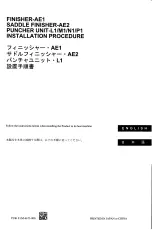
The Properties of Color
5-4
Col
o
r
M
anagement
Cha
p
te
r
5
Additive and subtractive color systems
Color devices used in desktop publishing and printing simulate the
range of visible colors using a set of primary colors that are combined
to create other colors. There are two methods of creating a range of
colors from a set of primary colors. Computer monitors and scanners
use the
additive color model
. Printing technologies, including Color
PagePro Ex print devices and offset presses, use the
subtractive
color model
.
Additive (RGB) color
Color devices that use the additive color model make a range of colors
by combining varying amounts of red, green, and blue light. These
colors are called the
additive primaries
. White is created by adding
the maximum amount of red, green, and blue light available. Black
occurs wherever all three colors are absent. Grays are created by
adding varying amounts of all three colors together. Combining
varying amounts of any two of the additive primaries creates a third,
saturated hue.
A familiar device that uses this color model is the computer monitor.
Monitors have red, green, and blue
phosphors
that emit varying
amounts of light to display a given color. Scanners create digital
representations of colors by measuring their red, green, and blue
components through colored filters.
Subtractive (CMY and CMYK) color
The subtractive color model is used in color printing, and in color
photographic prints and transparencies. While the additive color
model simulates the visible spectrum of color by adding light of three
primary hues, the subtractive color model uses a “white” or neutral
light source containing light of many wavelengths. Inks, toners, or
other
colorants
are used to selectively absorb (subtract) certain
wavelengths of light that otherwise would be reflected or transmitted
by the media in question.
Summary of Contents for PAGEPRO EX
Page 17: ...Chapter 1 Introduction Introduction Chapter 1 ...
Page 23: ...Chapter 2 Using the Printer Using the Printer Chapter 2 ...
Page 30: ...The Printer Parts and Supplies 2 7 Using the Printer Chapter 2 6 Oiling roller 7 Fusing unit ...
Page 71: ...Chapter 3 Changing the Printer Settings Changing the Printer Settings Chapter 3 ...
Page 113: ...Chapter Color Management 5 Color Management Chapter 5 ...
Page 135: ...Chapter Fonts 6 Fonts Chapter 6 ...
Page 139: ...Chapter 7 Maintaining Your Printer Maintaining Your Printer Chapter 7 ...
Page 183: ...Chapter 8 Troubleshooting Troubleshooting Chapter 8 ...
Page 208: ...Chapter 9 Specifications Specifications Chapter 9 ...
Page 215: ...Glossary Appendix A Appendix A Glossary ...
Page 222: ...Quick Reference Appendix B Appendix B Quick Reference ...
Page 229: ...Index Appendix C Appendix C Index ...
Page 234: ...General Information ...
















































